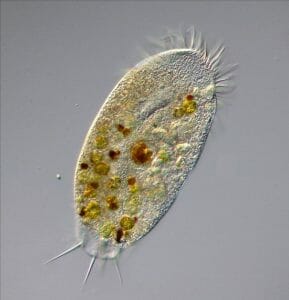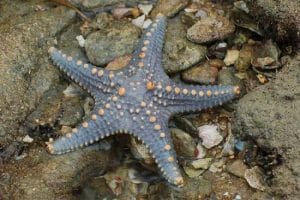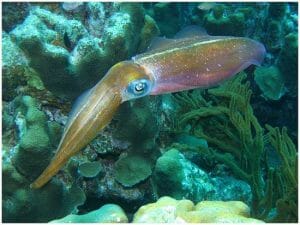Invertebrate Definition
Invertebrates are animals that don’t have a backbone. The vertebral column is another name for the backbone. Over 90% of all species on Earth are invertebrates, and invertebrate species have been found in the fossil record as far back as 600 million years ago. Molecular biology studies suggest that all invertebrates evolved from a single invertebrate group.
Characteristics of Invertebrates
In addition to not having a backbone, invertebrates have soft bodies because they don’t have an internal skeleton (endoskeleton) for support. Instead, many have structures on the outside (exoskeleton) that provide support and protection. In addition, invertebrates are cold-blooded, meaning they can’t regulate their body temperature, so it changes depending on the environment.
Invertebrates are incredibly diverse. They live in fresh water, salt water, on land and as parasites in other animals. There are invertebrates that are carnivorous (meat eaters), herbivores (plant eaters) and omnivores (meat and plant eaters). There are even some invertebrate species that grow bacteria and cells inside their bodies that make their food. Some invertebrates stay in one spot, while others fly, swim, float, crawl and burrow.
Types of Invertebrates
Eighty-five percent of invertebrates – some 923,000 species – are arthropods. Mollusks have approximately 100,000 distinct species. Some of the most common types of invertebrates are:
- protozoans – single-celled organisms such as amoebas and paramecia
- annelids – earthworms, leeches
- echinoderms – starfish, sea urchins, sea cucumbers
- mollusks – snails, octopi, squid, snails, clams
- arthropods – insects, spiders, crustaceans such as shrimp, crabs, lobsters
Example of Invertebrate Animals
Amoebas
Amoebas are single-celled organisms that are part of the simplest group of invertebrates. They have a cell membrane, DNA, a nucleus and organelles just like most cells in the human body. The difference is that amoebas can move using their pseudopodia, or “false feet.” They also use pseudopodia to catch and eat food. Beneficial amoebas are found in soil where they help regulate bacterial populations and recycle nutrients. There are several species of ameba that cause disease, including Entameba hystolitica, which causes diarrhea.

The image above shows what an ameba looks like under a microscope.
Earthworms
Earthworms, also called angleworms, are very important in the world because their burrowing turns over and aerates the soil, provides soil drainage and mixes in organic material. They are one of more than 1,800 species of worms that live on land. Earthworms eat pieces of plants and animals in the soil. The bodies of worms are divided into segments; in certain species, some of the organs are duplicated in each segment. Earthworms can detect light and vibrations, but they are blind and cannot hear. Birds and other animals use earthworms as a food source.
Starfish
Starfish are also called sea stars because of the arms or “rays” they have sticking out of their bodies. Some starfish live deep in the oceans, while others live on the shore. There are over 1,600 species of starfish. Most have five arms, but one species is known to have 24 arms. Starfish have tube feet that work with hydraulic pressure to help them move. Snails, mussels and clams are common foods for starfish, which use their arms to guide food particles from the water into their mouths. These organisms have the unique ability to lose and regrow their arms.

The image above shows a starfish.
Squids
Squids are decapods, meaning they have 10 arms or tentacles. They are different from octopuses, which have eight arms. Each tentacle has four rows of suckers that help them catch prey (usually fish) and attach themselves to surfaces. Squids live in the ocean, both near the shore and in the ocean depths. Their length ranges from about 3/4 of an inch to more than 65 feet. Some squids are luminous, which means they have light organs in their skin that let them change color to camouflage themselves, attract prey and communicate with other squids. Humans, some fishes and sperm whales eat squid.

The image above shows a reef squid.
Spiders
Spiders make their home on every continent except Antarctica. They are not insects because they have eight legs (insects have six legs). Experts think there are about 170,000 species of spiders in the world, but only around 39,000 are described and named. Some spiders live on land and others live in the water. The leg span of species ranges from 0.02 of an inch to 10 inches. Most spiders have eight eyes, and can sense light and dark. They also are very sensitive to vibration, which comes in handy when prey gets stuck in their web. Some spiders inject poison into their prey to kill it, while others prefer to wrap up their live catch and save it for later. Spiders can only ingest liquids; they bite holes in their prey and inject enzymes that dissolve the tissues so they can be sucked out.
Quiz
1. An invertebrate is/has ________________________.
A. warm-blooded.
B. a mammal.
C. a soft body.
D. a backbone.
2. Which of the following organisms is NOT an echinoderm?
A. spider
B. sea star
C. sea cucumber
D. sea urchin
3. What percentage of species on Earth are invertebrates?
A. 50%
B. over 90%
C. 75%
D. All species on Earth are invertebrates.
